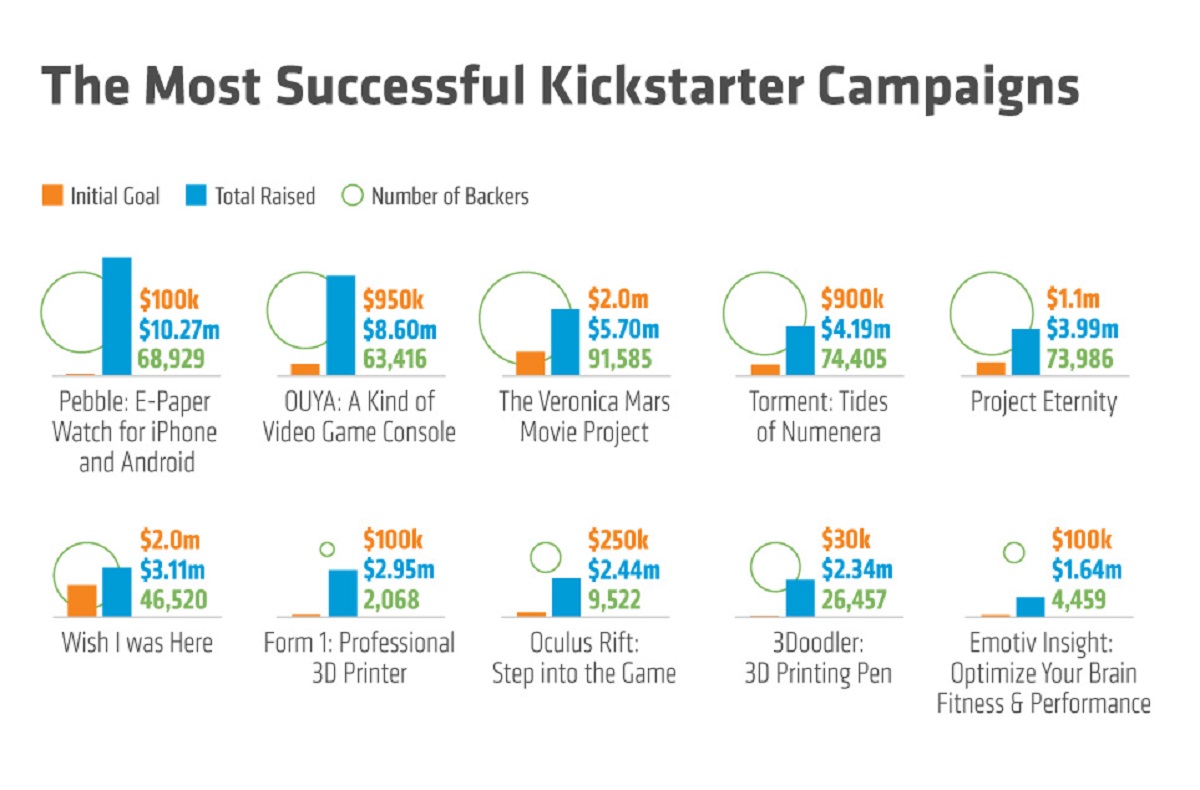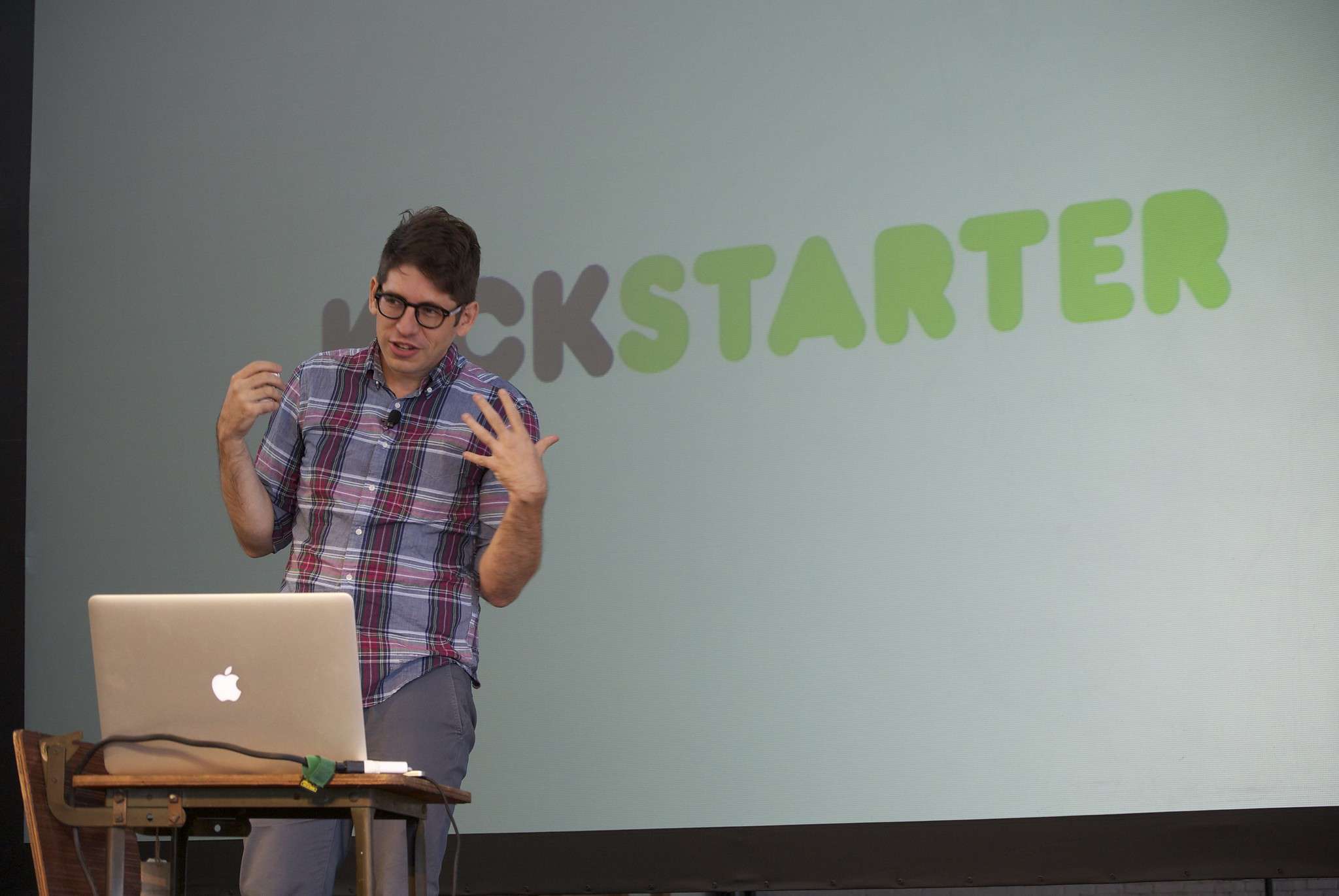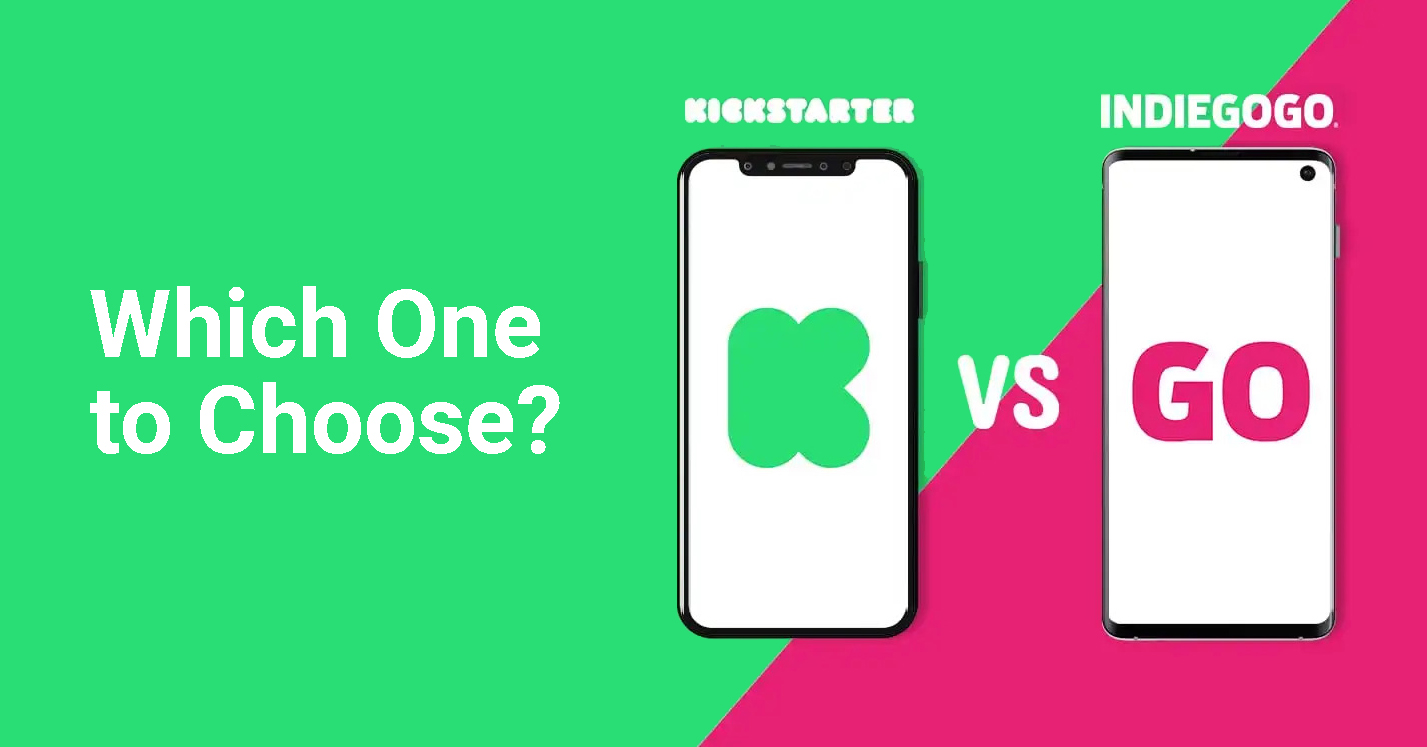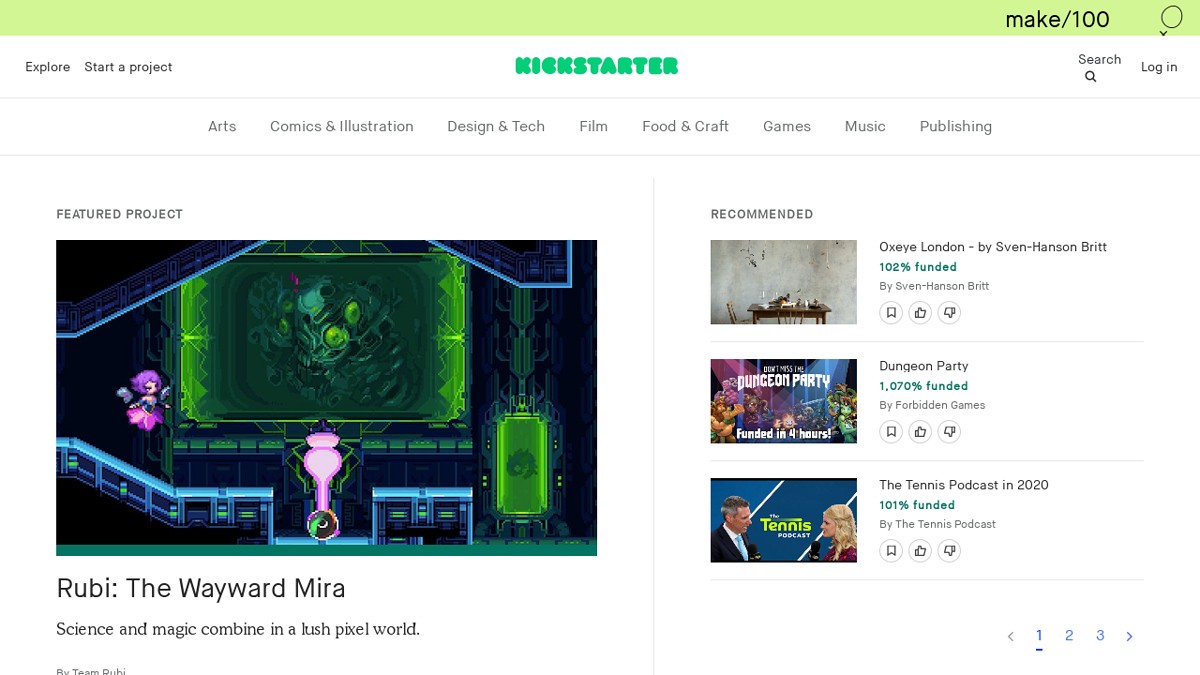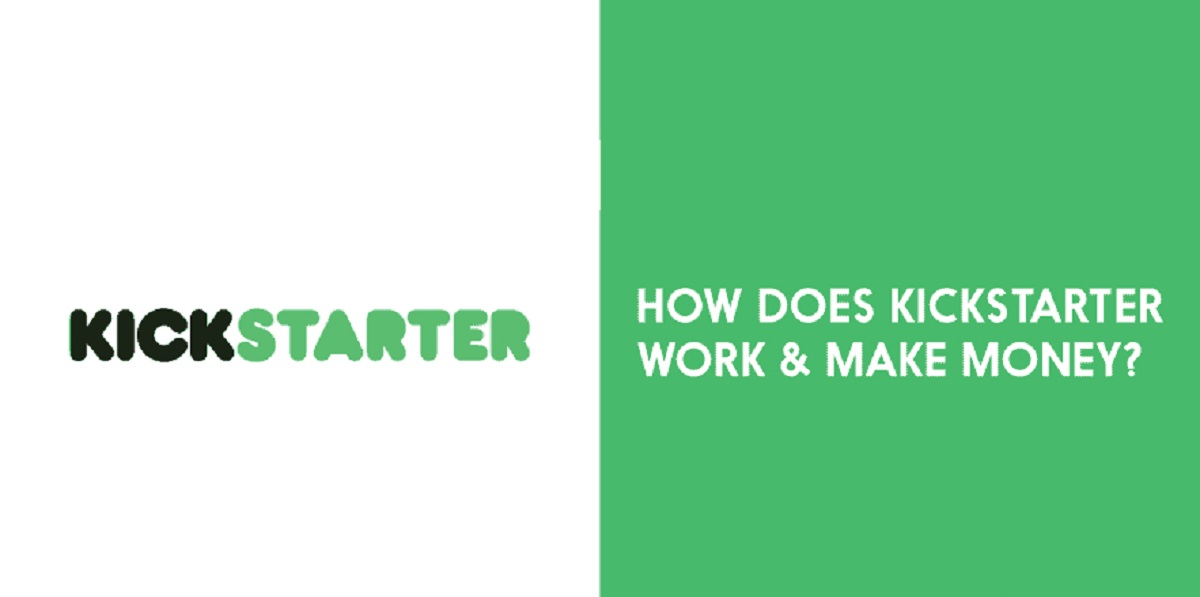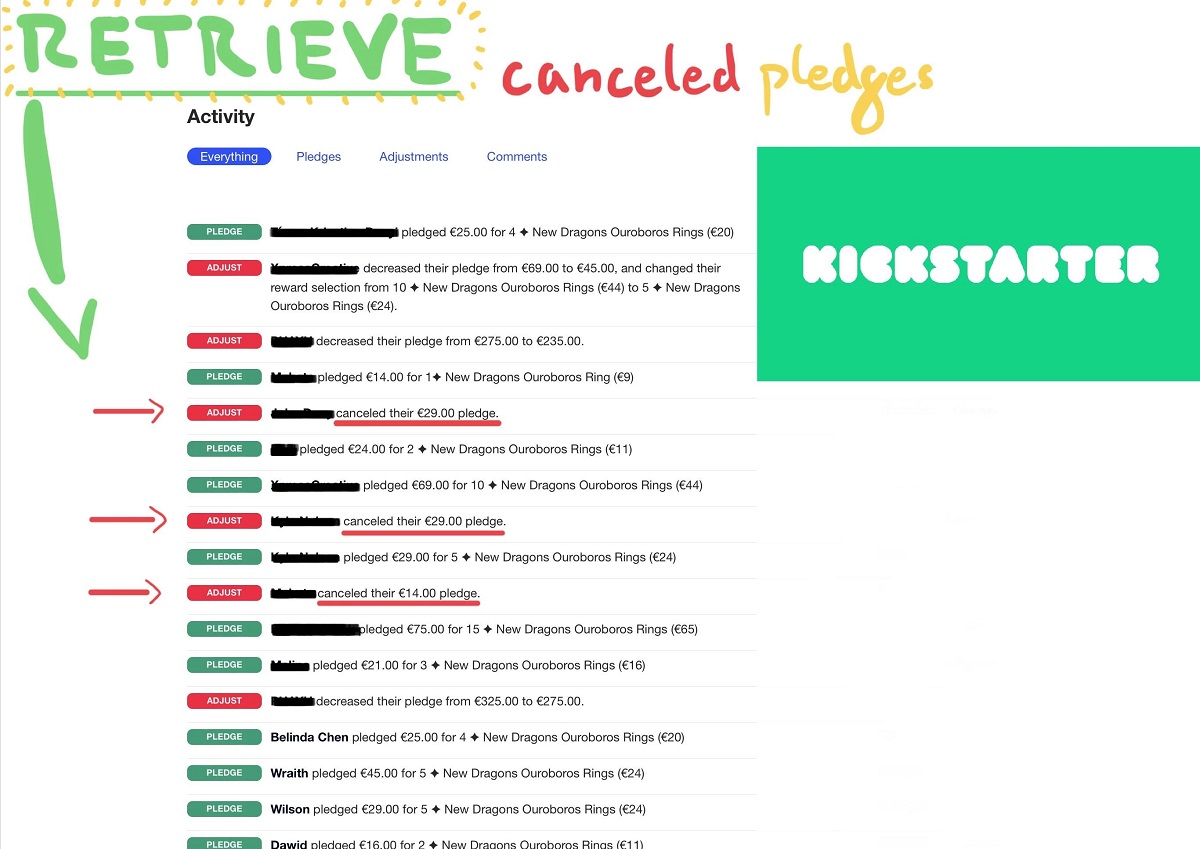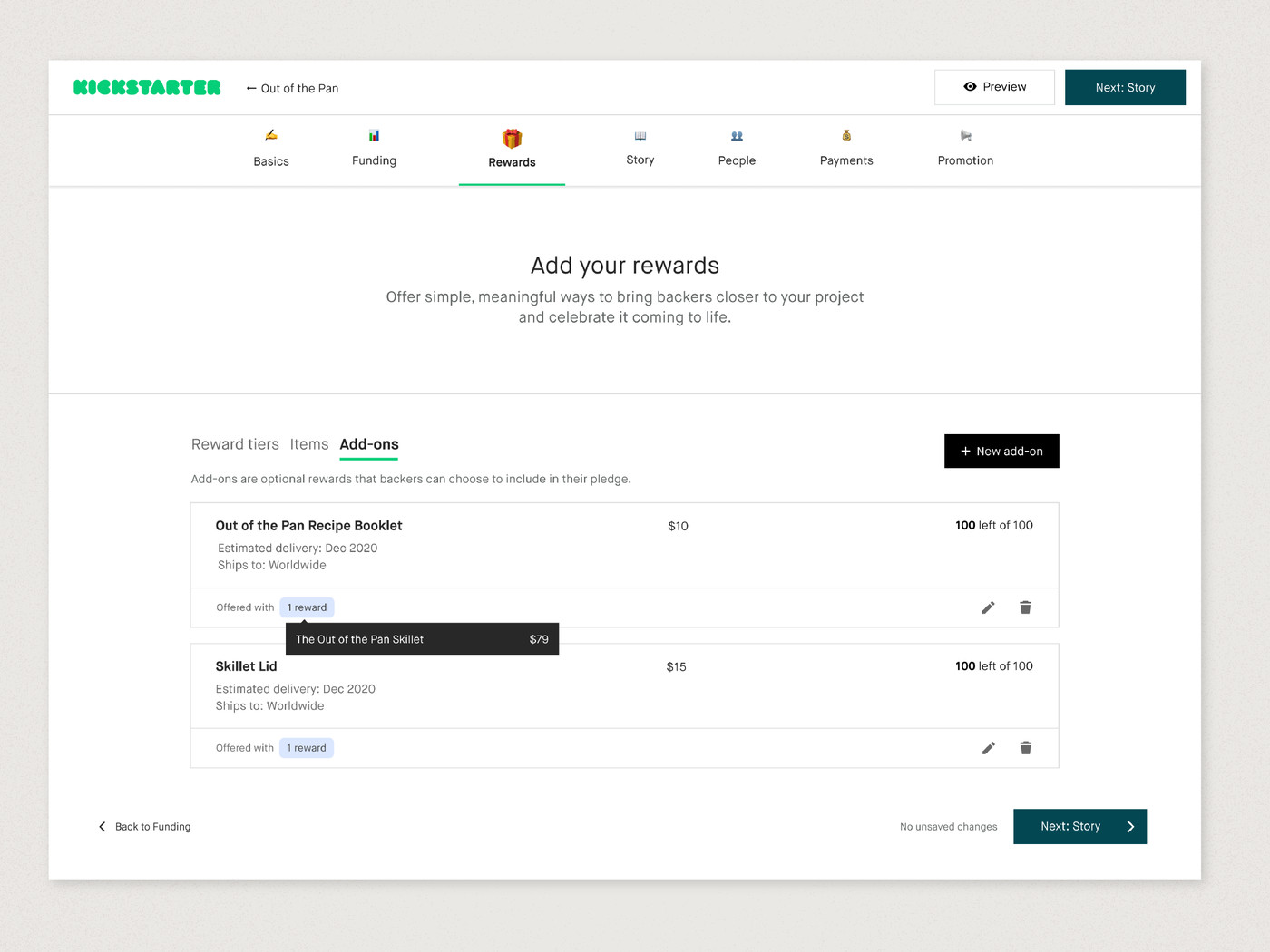Introduction
Kickstarter has revolutionized the way entrepreneurs, artists, and creators bring their ideas to life. It has become a platform for individuals to showcase their innovative projects and gain support from a global community. Over the years, Kickstarter has witnessed numerous successful campaigns that have exceeded all expectations, raising millions of dollars and capturing the imagination of backers.
In this article, we will explore some of the most successful Kickstarter projects that have made waves in the crowdfunding world. These projects have not only shattered fundraising goals but have also inspired and influenced industries across the board. From virtual reality devices to board games, let’s delve into the realm of Kickstarter success stories.
Before we dive into the specific projects, it’s important to note the key factors that contribute to a successful Kickstarter campaign. Exceptional marketing, effective storytelling, a well-planned rewards structure, and a strong online presence all play a crucial role in capturing the attention of potential backers. Additionally, having a clear and compelling vision, coupled with passion and dedication, has proven to be instrumental in achieving Kickstarter success.
Without further ado, let’s explore some of the most notable Kickstarter triumphs that have captivated the crowdfunding community.
Oculus Rift
One of the most groundbreaking projects to emerge from Kickstarter is the Oculus Rift, a virtual reality (VR) headset that took the gaming industry by storm. Launched in 2012 by Palmer Luckey, the Oculus Rift promised to transport players into immersive virtual worlds like never before.
The Oculus Rift quickly gained widespread attention and hype, raising an astounding $2.4 million in just 30 days. Backers were captivated by the idea of experiencing games in a whole new way, and the project attracted the attention of tech giants like Facebook, which acquired Oculus VR for a staggering $2 billion in 2014.
With its high-resolution display, precise motion tracking, and comfortable design, the Oculus Rift offered a truly immersive gaming experience. The success of the Oculus Rift sparked a resurgence of interest in virtual reality technology and paved the way for future VR innovations.
Thanks to the Oculus Rift, virtual reality has become more accessible and has expanded beyond gaming into fields such as architecture, medicine, and entertainment. The project’s success on Kickstarter not only transformed the gaming industry but also revolutionized the way we interact with digital content.
The Oculus Rift serves as a testament to the power of Kickstarter in enabling innovative projects to become a reality. It showcased the demand for immersive experiences and the willingness of backers to invest in cutting-edge technology. Without the support of the Kickstarter community, the Oculus Rift may not have gained the momentum needed to revolutionize the way we experience virtual reality today.
Pebble Smartwatch
The Pebble Smartwatch is another notable success story that emerged from Kickstarter. Created by Eric Migicovsky, the Pebble Smartwatch became the most funded project in Kickstarter history at the time of its campaign launch in 2012.
The Pebble Smartwatch stood out from existing smartwatches by offering a simple yet functional design, long battery life, and compatibility with both Android and iOS devices. The project quickly gained popularity among tech enthusiasts and watch aficionados who were looking for a smartwatch that combined style and functionality.
With over 68,000 backers pledging more than $10 million, the Pebble Smartwatch shattered all expectations and became a symbol of Kickstarter success. The project not only showed the demand for wearable technology but also showcased the power of crowdfunding in bringing innovative products to the market.
Following its successful Kickstarter campaign, the Pebble Smartwatch went on to capture a significant share of the smartwatch market, competing against heavyweight brands like Apple and Samsung. It paved the way for a new era of wearable technology and inspired other companies to explore the possibilities of creating stylish and functional smartwatches.
What made the Pebble Smartwatch so appealing to backers was its focus on simplicity and customizability. Users could personalize their watch faces, receive notifications, track their fitness goals, and even control music playback right from their wrists. This combination of features made the Pebble Smartwatch a game-changer in the wearable tech industry.
The success of the Pebble Smartwatch demonstrated that with the right product and a passionate community of supporters, even small startups can challenge industry giants. It shattered the notion that only established companies with extensive resources could compete in the tech market.
The legacy of the Pebble Smartwatch lives on, even though the company faced challenges and ultimately ceased operations in 2016. It paved the way for future smartwatches and inspired countless entrepreneurs to dream big and turn their ideas into reality through Kickstarter.
Exploding Kittens
Exploding Kittens is a card game that took Kickstarter by storm in 2015. Created by Elan Lee, Matthew Inman, and Shane Small, this cat-themed game quickly became a sensation for its unique blend of strategy, luck, and humorous illustrations.
With a funding goal of $10,000, the Exploding Kittens project exceeded all expectations by raising a staggering $8.8 million in just 30 days. The game’s quirky concept and eye-catching artwork appealed to backers, who embraced the opportunity to gather with friends and family for an explosively fun gaming experience.
The premise of Exploding Kittens is simple: players draw cards from a deck, hoping to avoid drawing an exploding kitten card that would eliminate them from the game. The gameplay is made even more interesting with various action cards that allow players to strategically navigate their way to victory.
What set Exploding Kittens apart from other card games was the collaboration with Matthew Inman, the creator of the popular webcomic “The Oatmeal.” His distinctive art style and quirky sense of humor infused the game with a delightful and irreverent charm.
The success of Exploding Kittens on Kickstarter not only established it as one of the most funded projects in crowdfunding history but also helped usher in a new era for board games. It demonstrated that traditional gaming experiences can successfully transition to the digital age, connecting people across the globe through a shared love of laughter and strategic gameplay.
Following its Kickstarter triumph, Exploding Kittens went on to become a best-selling game in retail stores worldwide. It not only paved the way for other independently created card games but also inspired a sense of community among game enthusiasts, who eagerly awaited the release of expansion packs and other related products.
Exploding Kittens showcased the potential of Kickstarter in bringing unique and innovative games to life. It proved that a game with a captivating concept, engaging artwork, and a touch of humor could capture the hearts and wallets of backers around the world.
The success of Exploding Kittens continues to inspire independent creators to bring their imaginative projects to Kickstarter, showing that with the right combination of creativity and gameplay, a card game featuring explosive felines can become a global phenomenon.
Coolest Cooler
The Coolest Cooler is a project that became an epitome of Kickstarter success and innovation. Created by Ryan Grepper, this next-generation cooler promised to be more than just a container for keeping drinks cold—it aimed to revolutionize the way people enjoyed outdoor activities.
Launched on Kickstarter in 2014, the Coolest Cooler quickly captured the attention and imagination of backers. With features like a built-in blender, waterproof Bluetooth speakers, a USB charger, and even an integrated cutting board, the Coolest Cooler offered a portable party all in one package.
Backers flocked to this multifunctional cooler, pledging a remarkable $13 million, making it the highest-funded Kickstarter project at the time. The success of the Coolest Cooler demonstrated the demand for innovative and convenient products that enhance the overall outdoor experience.
What made the Coolest Cooler stand out was its ability to blend practicality with entertainment. It not only kept beverages cold but also provided a variety of features that made outdoor gatherings more enjoyable. Whether it was blending delicious frozen drinks, playing music, or keeping devices charged, the Coolest Cooler was designed to be the ultimate companion for all outdoor adventures.
Despite its remarkable success on Kickstarter, the Coolest Cooler faced production challenges and delays, leading to some controversy and criticism. However, the original backers remained loyal and patient, demonstrating their trust and belief in the product’s potential.
The Coolest Cooler not only transformed the way people thought about coolers but also showcased the power of Kickstarter in bringing ambitious projects to life. It inspired countless entrepreneurs to think outside the box and create products that cater to the needs and desires of individuals.
Since its Kickstarter campaign, the Coolest Cooler has continued to evolve and improve, with subsequent iterations addressing the initial production challenges. It serves as a reminder that innovation and perseverance are crucial in successfully bringing a game-changing product to market.
The Coolest Cooler’s impact goes beyond its functionality—it symbolizes the spirit of Kickstarter and the belief in bringing unique and revolutionary ideas to life. It encourages aspiring creators to embrace their innovative visions and harness the power of crowdfunding to transform them into reality.
Fidget Cube
The Fidget Cube is a small handheld device that captured the attention of Kickstarter backers around the world. Created by Matthew and Mark McLachlan, this simple yet ingenious toy was designed to provide a soothing sensory experience for those who fidget or seek stress relief.
The Fidget Cube was introduced on Kickstarter in 2016 and quickly gained traction due to its unique concept. The compact device featured various buttons, switches, and gears, each offering a different tactile experience to engage restless hands and minds.
The project surpassed its initial funding goal of $15,000 within hours and went on to raise over $6 million in just one month. Backers resonated with the idea of a discreet and portable tool that could help combat anxiety, improve focus, and alleviate boredom.
What made the Fidget Cube so appealing was its simplicity and versatility. It provided a range of tactile sensations, allowing users to find their preferred form of fidgeting. Whether it was clicking buttons, spinning gears, rolling balls, or flipping switches, the Fidget Cube offered a satisfying and tactile experience.
With the Fidget Cube, the McLachlan brothers tapped into a need that many people didn’t even realize they had. It became a symbol of the growing awareness of the importance of mental well-being and the acceptance of different ways to manage stress.
Beyond its success on Kickstarter, the Fidget Cube sparked a global trend and became a cultural phenomenon. It received widespread media coverage and gained popularity among people of all ages, from children to adults in various professions seeking a discreet outlet for nervous energy.
The Fidget Cube’s success demonstrated the power of Kickstarter to launch simple yet impactful products that meet unmet needs and resonate with a wide audience. It highlighted the value of understanding and addressing the everyday challenges faced by individuals, and the potential for innovative solutions to enhance well-being.
Although the hype surrounding the Fidget Cube has subsided over time, its legacy remains. It paved the way for the fidget toy market and inspired a multitude of spin-offs and variations. The Fidget Cube not only provided a solution for those who struggle with fidgeting but also encouraged open conversations about mental health and the importance of self-care.
The Fidget Cube serves as a reminder that sometimes, the simplest ideas can have the most significant impact, and Kickstarter serves as a platform where these ideas can come to life with the support of a passionate community.
The Veronica Mars Movie Project
The Veronica Mars TV series developed a dedicated and passionate fanbase during its original run from 2004 to 2007. When the show was canceled, fans were left wanting more, and their wishes were answered through the power of Kickstarter.
In 2013, creator Rob Thomas launched a Kickstarter campaign to fund a Veronica Mars movie, aiming to raise $2 million to bring the beloved detective back to the big screen. Fans rallied behind the project, and within hours, the campaign reached its goal, eventually raising over $5.7 million.
The Veronica Mars Movie Project was a testament to the strength and influence of dedicated fandom. The campaign proved that a loyal fanbase could breathe life into a canceled series and give it a second chance to continue the story.
The success of the Kickstarter campaign not only funded the movie but also showcased the potential for crowdfunding to support projects that may not have received financial backing through traditional avenues. It demonstrated that fan demand and support can have a significant impact on the entertainment industry.
The Veronica Mars movie not only provided closure to the television series but also rewarded fans with an extended story arc and a chance to reunite with their favorite characters. Backers became an integral part of the project, invited to screenings, premieres, and even credited as producers.
The Veronica Mars Movie Project not only inspired other television series and creators to explore crowdfunding but also solidified Kickstarter as a viable platform for reviving beloved shows and films.
The project’s success is a testament to the power of community and the ability of fans to make a difference. It showed that with passion and determination, fans can reshape the entertainment landscape and influence the projects that get made.
The Veronica Mars Movie Project not only brought closure to the series but also showcased the power of crowdfunding to transform fan dreams into reality. It remains a shining example of how a dedicated and supportive community can play an instrumental role in bringing back beloved characters and stories.
Reading Rainbow
Reading Rainbow holds a special place in the hearts of many as a beloved educational television program that instilled a love of reading in children. In 2014, LeVar Burton, the show’s host, launched a Kickstarter campaign to revive Reading Rainbow as a digital platform and make it accessible to children everywhere.
The campaign aimed to raise $1 million to develop a web version of Reading Rainbow and provide free access to schools in need. The response was overwhelming, with the project surpassing its initial goal in just 11 hours and eventually reaching over $6.4 million in funding.
The success of the Reading Rainbow Kickstarter campaign highlighted the enduring impact and importance of quality educational content for children. It resonated with adults who grew up watching the show and recognized the value of fostering a love of reading and learning from an early age.
With the funds raised, the Reading Rainbow team created a digital platform that offered a vast library of books and video field trips. By making use of technology, Reading Rainbow aimed to spark children’s imaginations and connect them with the joy of reading in a new and interactive way.
The Kickstarter campaign for Reading Rainbow not only brought the program back to life but also demonstrated the power of crowdfunding to support educational initiatives. It showed that individuals can come together to provide valuable learning resources for children and make a direct impact on their education.
The revival of Reading Rainbow brought the magic of reading to a new generation of children, including those who may not have had access to the show before. Through the digital platform, interactivity, and a free subscription model for schools in need, Reading Rainbow expanded its reach and empowered children to discover the joy of reading.
The success of the Reading Rainbow Kickstarter campaign also led to the creation of additional educational programs and initiatives, further emphasizing the importance of literacy and providing equitable access to educational resources.
Reading Rainbow serves as a testament to the lasting impact of quality educational content and the passion of a dedicated community. It demonstrated that passionate supporters, combined with the power of crowdfunding, can ensure the preservation and continuation of meaningful educational experiences for future generations.
The 7th Continent
The 7th Continent is a tabletop adventure game that took Kickstarter by storm in 2015. Designed by Ludovic Roudy and Bruno Sautter, this game offered players a unique and immersive exploration experience set on a mysterious and dangerous continent.
With a goal to raise €40,000, the campaign for The 7th Continent exceeded all expectations, drawing in over €7 million in funding. Backers were captivated by the game’s innovative mechanics, intricate storytelling, and stunning artwork, making it one of the most successful board game projects on Kickstarter at the time.
The gameplay of The 7th Continent revolves around exploration and survival in an uncharted land. Players embark on a journey filled with perilous challenges, hidden treasures, and the discovery of dark secrets. The game’s modular nature ensures that each playthrough is unique, offering endless replayability and excitement.
What made The 7th Continent stand out was its commitment to immersion and storytelling. The game slowly unveils its mysteries as players progress, encouraging teamwork, strategy, and careful decision-making. The combination of engrossing gameplay and intricate narrative drew players into a world of adventure and danger.
The success of The 7th Continent on Kickstarter showcased the demand for high-quality, narrative-driven board games. It proved that players were eager for immersive experiences that went beyond traditional mechanics and fostered a deep connection with the game world.
Following its Kickstarter triumph, The 7th Continent went on to receive critical acclaim and became a staple in the board gaming community. It inspired other designers to push the boundaries of storytelling and exploration in tabletop gaming, setting a new standard for immersive gameplay.
The 7th Continent not only demonstrated the passion and dedication of its creators but also highlighted the power of Kickstarter to bring unique and ambitious board game projects to life. It provided a platform for innovative ideas and gave game enthusiasts the opportunity to contribute directly to the development of an exceptional gaming experience.
Today, The 7th Continent remains a testament to the enduring appeal of exploration and adventure in tabletop gaming. It serves as a reminder of the limitless possibilities that crowdfunding offers, and the transformative effect it can have on bringing ambitious projects to the hands of eager players.
Kingdom Death: Monster
Kingdom Death: Monster is a dark and ambitious tabletop game that made waves on Kickstarter in 2012. Designed by Adam Poots, this unique and immersive game took players on a journey through a brutal and unforgiving world filled with monstrous creatures and challenging encounters.
With a funding goal of $35,000, the campaign for Kingdom Death: Monster exceeded all expectations, raising an astonishing $2 million in just 30 days. Backers were drawn to the game’s dark and atmospheric artwork, intricate miniatures, and deep gameplay mechanics, making it one of Kickstarter’s most successful board game projects at the time.
Kingdom Death: Monster offers a blend of cooperative and competitive gameplay set in a relentless and unforgiving universe. Players take on the role of survivors battling against terrifying monsters, building their settlement, and making tough decisions to ensure their survival. The game’s unique campaign mode and evolving narrative ensured a deep and immersive experience that kept players hooked for countless hours.
What set Kingdom Death: Monster apart from other tabletop games was its uncompromising commitment to its dark and mature theme. The game pushed boundaries with its challenging gameplay, unpredictable encounters, and mature story elements, appealing to players looking for a gritty and intense gaming experience.
Kingdom Death: Monster’s success on Kickstarter not only showcased the demand for deep and challenging board games but also demonstrated the power of crowdfunding to support unconventional and creative projects. It provided a platform for Adam Poots to bring his dark and visionary concept to life, unburdened by the constraints of traditional publishing.
Since its Kickstarter triumph, Kingdom Death: Monster has continued to evolve and expand, with additional expansions and updates released to enhance the game even further. It has become a favorite among hardcore board gamers who appreciate its attention to detail, atmospheric components, and strategic depth.
Kingdom Death: Monster’s success not only influenced the tabletop gaming industry but also fostered a dedicated community of passionate fans. It showed that with bold and innovative ideas, coupled with a committed fanbase, creators can carve their own path and create games that capture the imagination of players worldwide.
The impact of Kingdom Death: Monster extends beyond its Kickstarter campaign, demonstrating the ability of crowdfunding to enable visionary projects to flourish. It remains a testament to the power of concept, design, and community in shaping the landscape of modern tabletop gaming.
Conclusion
The success stories of Kickstarter projects showcased throughout this article demonstrate the incredible power of crowdfunding and the impact it has had on various industries. From groundbreaking virtual reality headsets to innovative board games and educational initiatives, Kickstarter has become a launchpad for creative and ambitious projects.
These projects have not only raised substantial funds but have also captured the imagination and support of a global community. They have transformed industries, challenged traditional notions, and inspired countless creators and entrepreneurs to pursue their dreams.
Kickstarter has given individuals a platform to showcase their innovative ideas and receive direct support from backers who believe in their vision. It has empowered creators to defy industry conventions, embark on new ventures, and bring their unique projects to life.
Furthermore, Kickstarter has facilitated the establishment of passionate communities around these projects. Backers have become active participants, directly contributing to the success and development of the projects they support. This sense of community has fostered collaboration, engagement, and a shared love for creativity and innovation.
It is important to recognize the impact of Kickstarter on the wider landscape of crowdfunding and the acceleration of innovative projects. The platform has encouraged individuals to think differently, take risks, and challenge the status quo. It has unquestionably democratized fundraising, allowing anyone with a compelling idea and a clear vision to have a chance at finding support and bringing their dreams to fruition.
As the world continues to evolve, Kickstarter and similar crowdfunding platforms provide a vital space for creators to connect with backers and turn their ideas into reality. These success stories serve as a constant reminder of the transformative power of collaboration, community, and crowdfunding in shaping the future of industries and fueling innovation.
Whether it’s bringing virtual reality devices to the masses, reviving beloved TV shows, or reinventing classic gaming experiences, Kickstarter has proven to be a driving force in enabling creative ventures to thrive. As the platform continues to evolve and adapt, it will undoubtedly play a leading role in supporting the next wave of innovative projects that will captivate and inspire audiences around the world.







